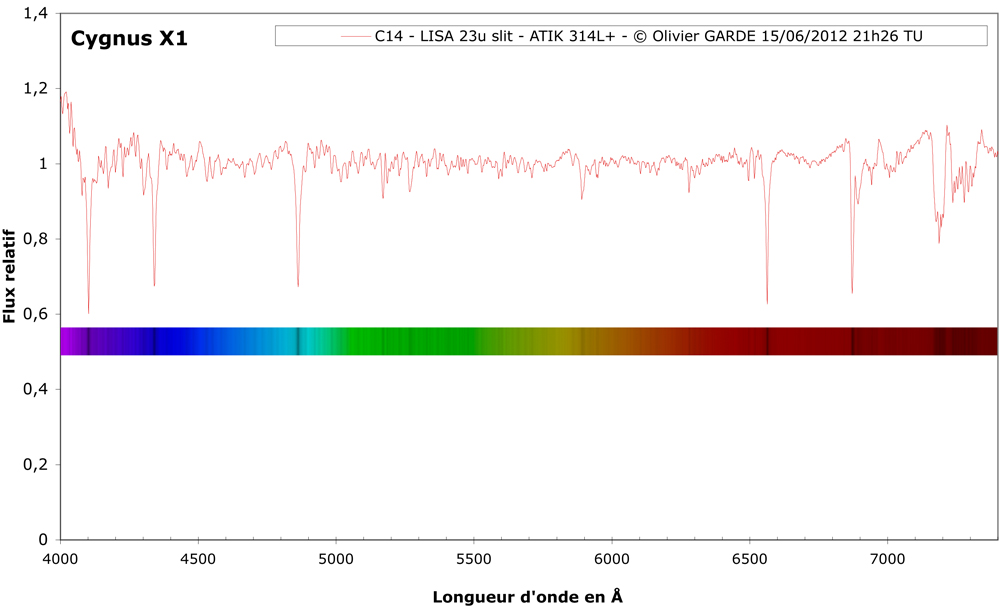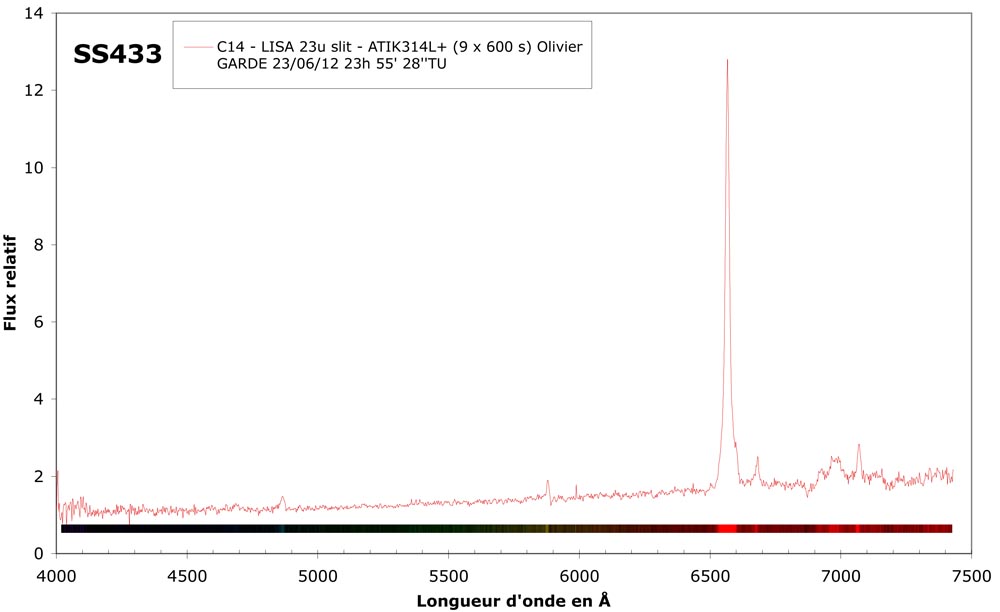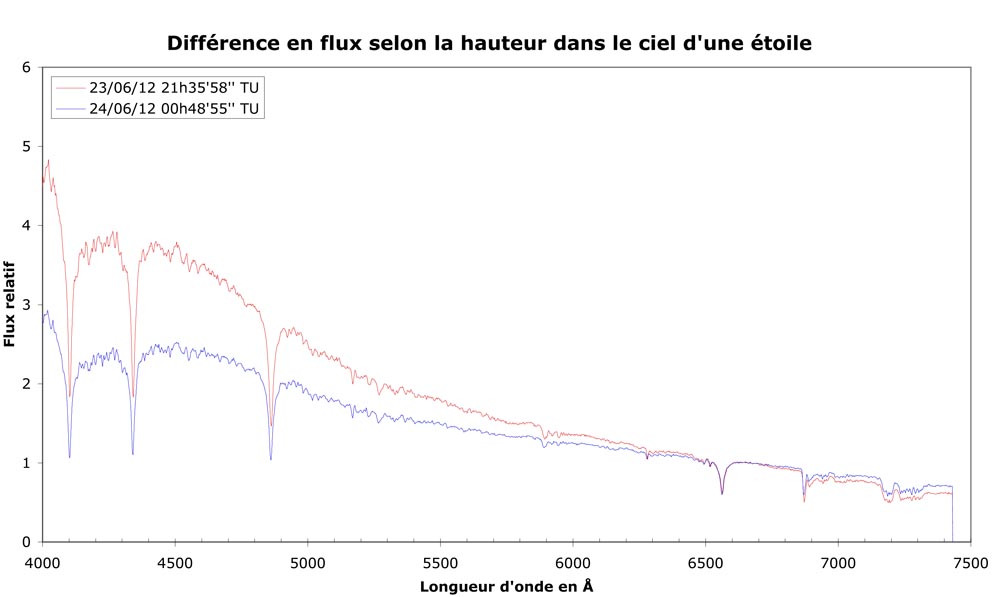Hello,
there has been some very interesting discussion on SS 433 and microquasars at La Rochelle Pro/Am meeting. This will certainly become a subject of interest in the time coming for low resolution spectroscopists..
Microquasars, and specially SS 433, are a reduced model of extragalactic huge radio jets which can be seen over several degrees on our sky (Centaurus A...). The issue is those huge jets evolves in hundred of thousands of years... but the astrophysics is assumed to be the same between the big extragalactic one and the "smaller" one such as SS433. The advantage is that the time scale is actually tied to the mass of the object. SS433 time scale is on human scale!
The SS433 system became a system of interest back in 1970's because it was the discovery that
-a supernova remant
-a radio source
-an optical object with very strange spectrum
... were actually tied to the same object... now known as SS433 !
I understood from Katherine Blundell (University of Oxford, UK) that the object is made of:
-a primary star of unknown spectral type
-a secondary companion which is a black hole; the two rotate around their center of mass in about 13 days (first period)
-an accretion disk exists around the black hole; winds eject material from this disk in flows parallel to the polar axis of the disk, both directions. This is visible in the stationary lines (such as the stationnary Halpha line) which is composed actually of 3 lines with one moving back and forth in 13 days as it comes from this disk
-huge jets are coming from the black hole poles (both directions) in very high speed. Material bulbs are ejected every few hours at a speed around 35% of the speed light; they then continue to move toward the ejection direction at the same speed!
-those jets precess like the kayak paddle movement (in an angle close to 40°) in about 163 days (second period); so basically the bulbs are ejected like a canonball making a 40° circle around the sky... and in both direction. They have also a smaller nutation movement visible in the spectra as well
-depending on the line of sight and the canonball direction, the bulb are ejecting toward us or not... then the hydrogen emit a emission line but shifted by Doppler-Fizeau effect... and because the speed is so high, the shift is enormous for a galactic object. Observing window of the Halpha emissions moving around in 163 days is 5800-7800A... be careful with your spectrograph to keep this in mind!
-there is also some material in a ~perpendicular direction from the jet, similar to a ruff around the neck. It is actually not exactly perpendicular and move in a larger angle (~70°) in about 550 days (third period!). This phenomenon is quite unknown and the main goal of Katherine Blundell photometry/spectro project is to better understand this... but it will require several years of observation with phenomenon within hours (with larger telescope and smaller exposure time, 5min phenomena have been observed)
-the material which is around the binary is not impacted by the 13 days binary period and it is visible in the spectrum as two stationary (Halpha) lines around the central moving back and forth line... but those two lines do not move because the material doesn't move...
-some times (about every year), there is an outburst. The stationary lines switches from 3 gaussian to 5. Two additional lines expend to the blue and to the red side of the stationary lines... then the radio outburst is visible. So optical spectroscopy is an "alert" for radiotelescope to catch those outbursts!
While we wait for Katherine Blundell presentation PDF to be shared, you can check out a video she made on a larger subject:
http://royalsociety.org/events/2010/black-holes/
Katherine Blundell showed her project of 4 telescopes around the globe (India, Australia, South Africa, Chile) located in high schools but close to a professional astronomer for support. Those four RCOS 20inch are currently doing photometry and they will do spectroscopy when SS433 is visible.
Amateur with R~1000 spectrograph such as LISA would bring additional data:
-when one of the telescope is down (hardware problem, mousson in India, etc...) to fill in the gaps
-one telescope may detect nothing and the next telescope detect a new line; amateur spectra will help constraining event timing even if resolution is lower than 3000
-in case of outburst, continuous observation will be required to increase observational frequency
...
Two critical points for the spectra:
1/ accurate timing of your observation; double check your PC time and FITS file timing
2/ accurate wavelength calibration as the line position accuracy will be a key factor of success
3/ instrumental response correction
But do not correct your spectra from heliocentric velocity or from telluric lines for exemple; this can be done by batch with a single tool.
Also, an absolute flux calibration would be nice but not mandatory.
In addition to SS433, the goal is to take regular spectra of quieter microquasars (a list will be published soon but Christian Buil is a good start). Some are bright as mag 6 or 9 and regular optical spectroscopy will help detecting burst for them...
Christian web page on microquasars:
http://www.astrosurf.com/buil/microquasars/obs.htm
Expectation is that amateur would be able to provide FITS compliant spectra (ie: BeSS format) so they could be incorporated in a pro/am database of microquasars spectra. More to come on this subject this coming summer!
In conclusion:
==>you can already start practicing on SS433 (located in Aquila, so becoming more and more visible!) and follow for exemple the large emission lines that move very quickly!
==>you can also start monitoring other microquasars (such as Cygnus X1), publish your spectra on the forum and archive them in proper FITS/BeSS format so you'll be ready when the database will be ready...
Cordialement,
Olivier Thizy
Vous ne verrez plus des étoiles comme avant !
http://www.shelyak.com/en/








